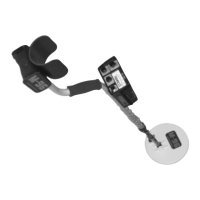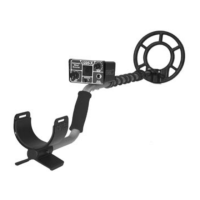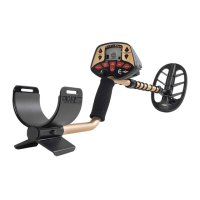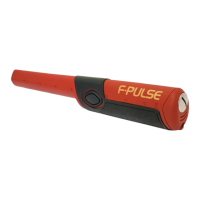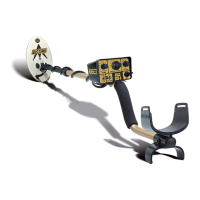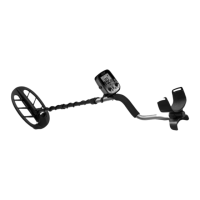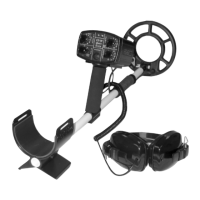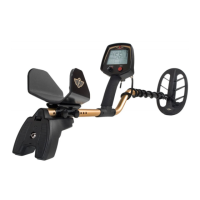TARGET ID AND AUTOTUNE MODES
Pinpointing in either of the search modes is difficult and requires
practice. but with practice you should be able to get the hang
of it. Many CZ-3D operators don’t even bother with the Pinpoint
mode unless they want a depth reading.
In Target ID or Autotune, simply use the same basic procedure
for the Pinpoint mode, moving the coil side to side and front to
back over the target area, stopping over the strongest audio
response. The only difference is that you should use as short a
stroke as possible (4 to 6 inches is plenty). When you stop the coil,
you will lose the audio signal. You MUST keep the coil moving at
least slightly, to determine the location of the strongest signal.
PINPOINTING
TARGET IDENTIFICATION
Target ID with the CZ-3D is quick and simple. Just keep in mind
these four rules:
A. You must be in the Target ID mode. If you’re searching in Auto
tune, switch over to “0” on your DISC control.
B. For accurate identification, the center of the search coil must
pass directly over the target.
C. There are many good targets, which are not classified by the
CZ-3D. As mentioned earlier, gold rings for example may fall in
just about any category except iron. Gold nuggets, depending
on their size and shape, may fall into just about any category,
the smaller nuggets falling on the lower half of the scale. So if
you’re not just looking for U.S. coins, you should test some sample
targets to determine what level of discrimination you want to
work at and what targets you want to dig.
D. Your CZ-3D will correctly identify most small targets most of
the time, but it can be fooled. Large targets, uneven ground
mineralization, a good target lying next to a bad target, and
deep targets, are sources of error.
Remember, the CZ-3D is designed to ID small, coin size
targets only, and even some of these may be deep, bent,
damaged, or corroded enough to give a false signal.
19
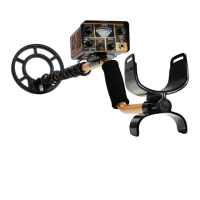
